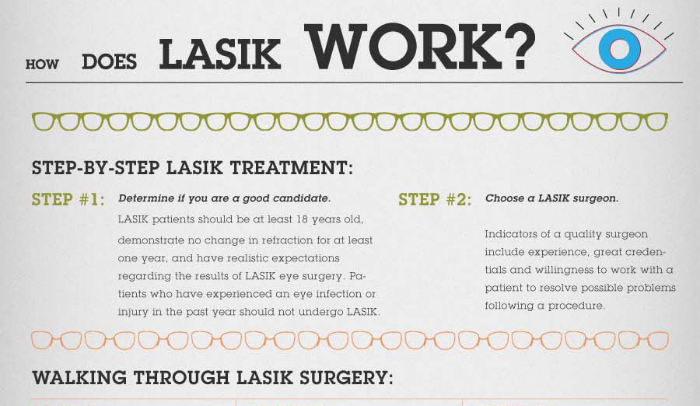As a cataract cosmetic surgeon, your day starts with a detailed eye evaluation, where you evaluate patients' vision and lens quality. You understand how essential it is to identify cataracts accurately. As soon as detected, you get ready for surgery, making sure every detail is accounted for. Yet the challenge doesn't end there. https://www.phillyvoice.com/laser-eye-surgery-faq-what-you-need-to-know-059991-ic/ unfolds in the operating room, where accuracy is vital. What happens following might define a client's aesthetic future.
The Diagnostic Process: Identifying Cataracts
When it concerns identifying cataracts, quality is key. You'll begin with an extensive eye assessment, where you'll assess visual acuity and look for any type of signs of cloudiness in the lens.
During this process, you'll make use of customized devices, such as a slit lamp, to get an in-depth view of the eye's framework. visit the next web site 'll additionally perform a dilated eye exam to review the lens and retina better.
Gathering your person's case history is critical, as it aids recognize risk elements like age, diabetes, or previous eye injuries.
After analyzing the results, you'll figure out the existence and severity of cataracts. This careful method ensures you provide the most effective suggestions for therapy, setting the stage for the following steps in their care.
The Procedure: Accuracy at work
After diagnosing cataracts and going over therapy choices, you get ready for the surgery, where accuracy is vital.
You go into the operating room, putting on sterile handwear covers and a mask. The person relaxes easily under brilliant lights, all set for the makeover.
You begin by carrying out local anesthetic, ensuring they feel no discomfort. With a stable hand, you make a small laceration in the cornea, using sophisticated techniques to get rid of the gloomy lens.
You very carefully place the synthetic intraocular lens, straightening it perfectly for optimum vision. Throughout the treatment, you monitor vitals and adjust as needed, preserving focus on the job.
In simply a short time, you'll have restored your patient's view, a satisfying end result for both of you.
Post-Operative Treatment: Making Sure Ideal Recuperation
When the surgical treatment is full, your function changes to ensuring the individual's smooth healing.
You'll begin by offering clear post-operative guidelines, stressing the significance of putting on the eye shield and taking prescribed drugs. Remind how cataract surgery works to stay clear of rubbing their eyes and engaging in laborious tasks.
Arrange a follow-up visit within a couple of days to check healing and address any type of concerns. Urge patients to report any kind of signs of infection, such as boosted soreness or discharge.
Furthermore, review the importance of using artificial rips to reduce dryness. Support their psychological well-being by comforting them that aesthetic renovations may take time.
Final thought
In a cataract cosmetic surgeon's day, you witness the journey from diagnosis to recovery. You see the precision in surgical procedure and the care taken post-operation to guarantee your optimum recovery. With this experience, you gain clarity not simply in vision, yet in understanding the whole process. The trust developed in between you and your surgeon is important, paving the way for a smoother healing. With the right assistance, you get on your method to taking pleasure in a brighter, clearer globe.
